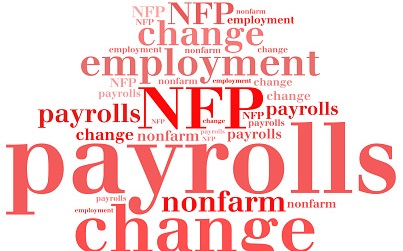US equities trade subdued and within recent ranges in pre-market trade this morning, with E-mini S&P 500 futures still rangebound between the 4150-4180 ahead of tomorrow’s key April labour market report. Vaccine makers are experiencing some losses as the Biden administration moves to back a proposed WTO intellectual property right waiver on Covid-19 vaccines in a bid to enhance the global fight against the pandemic. European equities, meanwhile, have eased back a little from earlier session highs but remain reasonably well supported close to all-time high levels in wake of a mostly positive slate of earnings releases this morning; the Stoxx 600 trades around 440, just below record levels close to 444.
Looking at bond markets; price action on the US treasury curve is subdued, with 10-year yields flat around 1.58%, still well below recent highs in the upper 1.70s%. The US government’s quarterly refunding announcement yesterday (i.e. the size and composition of bonds the US government is going to be selling over the next quarter) went largely as expected and has not had a lasting market impact. European government bond market price action is equally subdued this morning. Price action is likely to get more interesting following tomorrow’s US jobs numbers, with traders keeping their powder dry for now.
Turning to commodities; crude prices hit fresh cycle highs on Wednesday, with front-month WTI futures managing to eclipse their March highs and post a new post-pandemic high at $67.29 in wake of bullish Private API and official EIA US crude oil inventory figures. Modest profit taking means oil has come of the boil a little on Thursday, with WTI currently down a little over 0.5% on the session and trading in the low $65.00s. Concerns about the demand picture in parts of the world currently being hit hard by the Covid-19 pandemic continue to hold the market back from a sustained surge above recent cycle highs, but things are looking upbeat in the US, UK and are now getting better in Europe – arguably the demand picture is neutral/positive for crude right now. Supply side factors have some bearish risk; markets may still head lower if the US lifts sanctions on Iranian crude and OPEC+ presses ahead with output increase hikes.
In terms of metals, a weaker US dollar and subdued yield environment is giving a helping hand to precious metals. Gold is up about 0.3% this morning and in the $1790s, with bulls eyeing another test of and potential break to the north of the $1800 mark. Aluminium, meanwhile, is nearing its highest levels since 2018 at $2500 per tonne with analysts citing rising tensions between China, the commodity’s biggest producer, and Australia, a major supplier of its raw materials – China “indefinitely” suspended all activity under a China-Australia Strategic Economic Dialogue, in the latest setback to the strained relations between Beijing and Canberra, reports Reuters. This news is boosting other key metal prices such as steel and copper and is dragging iron ore prices higher. Bullishness on economic growth prospects in China, the US and elsewhere also continues to offer support.
Looking at FX markets, the picture is somewhat mixed. The US dollar is a little lower this morning, with the Dollar Index (DXY) having been pushed back to the 91.00 level (down about 0.3% on the day) amid strength most notably in the Swiss franc (up nearly 0.5% on the day versus the dollar) and euro (up around 0.3% on the day). Dollar traders await fresh impetus in the form of weekly jobless claims data and Feds peak later this session and tomorrow’s jobs data. In terms of the reason for strength in the Swissie and euro; there does not seem to be much behind strength in former aside from the seemingly ongoing absence of SNB intervention, while the latter is likely garnering some traction from solid Eurozone data out this morning. For reference, German Industrial Production numbers for the month of March beat expectations (up 3.0% MoM versus forecasts for a monthly growth rate of 1.7%), while Eurozone aggregate Retail Sales data (also for the month of March) also came in stronger than expected (at 12.0% YoY versus consensus forecasts for a 9.6% YoY growth rate).
The most interesting price action this morning has been in pound sterling; the Bank of England released the results of their latest monetary policy decision, where they left interest rates unchanged at 0.1% and opted to reduce the pace of their weekly UK government bond buying to £3.4B per week from £4.4B so that their current £895B QE remit (the total size of which was left unchanged) will last until the end of the year. Note that outgoing Monetary Policy Committee member Haldane voted to cut the bank’s QE remit by £50B to £845B in total. GBP’s initial kneejerk reaction to the rate decision was to spike lower, with GBPUSD dropping briefly as low as the 1.3850s from around 1.3900, though the currency pair has since reversed aggressively back above the big figure where it continues to trade right now. Net-net, the reaction to the meeting seems to have been modestly hawkish given the Bank’s new very bullish economic forecasts (2021 GDP growth forecast revised up to 7.25% from 5.0% and end-2021 unemployment forecast revised lower to 5.1% from 6.4% in the February forecasts). News of tensions with the EU over Jersey fishing rights (the UK has sent a Royal Navy patrol to the area amid a dispute with France) may be holding sterling back from making even greater gains.
In terms of the rest of the major G10 currencies; JPY is one of the G10 underperformers alongside the US dollar amid the broadly constructive risk tone and flat price action in US government bond markets. AUD and NZD, meanwhile, are both also underperformers amid the aforementioned worsening of Aussie-Sino trade ties.
The Day Ahead
Bank of England Governor Bailey will be speaking in the post-meeting press conference from 1300BST. US data in the form of labour costs and productivity in Q1 and weekly jobless claims will be out at 1330BST. FOMC Member and NY Fed President John Williams is up at 1400BST, ahead of hawkish Fed member Kaplan at 1500BST and Fed member Mester at 1800BST. Meanwhile, ECB Governing Council Member Schnabel will be speaking at 1415BST. US markets are likely to remain somewhat subdued, however, as traders keep risk off the table ahead of tomorrow’s key US labour market report for the month of April.




